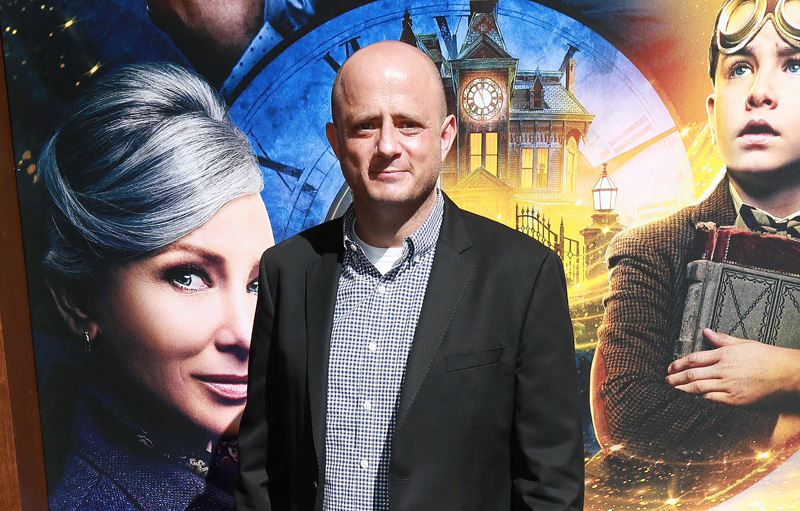CS Interview: Eli Roth on The House With a Clock in Its Walls
Universal Pictures and Amblin Entertainment provided ComingSoon.net with the chance to interview The House with a Clock in its Walls writer Eric Kripke. Check out our exclusive interview with the Supernatural creator below, and click here to purchase the delightful movie on Blu-ray!
RELATED: CS Interview: Eli Roth on The House With a Clock in Its Walls
In the tradition of Amblin classics where fantastical events occur in the most unexpected places, Jack Black (Nacho Libre) and two-time Academy Award winner Cate Blanchett (Thor: Ragnarok) star in The House with a Clock in Its Walls. The magical adventure tells the spine-tingling tale of 10-year-old Lewis (Owen Vaccaro) who goes to live with his uncle in a creaky old house with a mysterious tick-tocking heart. But his new town’s sleepy façade jolts to life with a secret world of warlocks and witches when Lewis accidentally awakens the dead.
Based on the beloved children’s classic written by John Bellairs and illustrated by Edward Gorey, The House with a Clock in Its Walls is directed by master frightener Eli Roth (Death Wish) and written by Eric Kripke (creator of TV’s Supernatural). Co-starring Kyle MacLachlan, Colleen Camp, Renée Elise Goldsberry, Vanessa Anne Williams and Sunny Suljic, it is produced by Mythology Entertainment’s Brad Fischer (Shutter Island) and James Vanderbilt (Zodiac), as well as Kripke.
RELATED: Beware The House with a Clock in its Walls in New Trailer
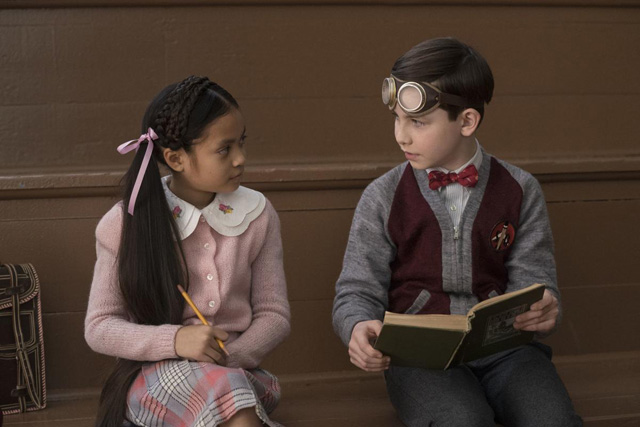
ComingSoon.net: I remember reading that Jamie and Laeta and a few other people had formed this company to bring the John Bellairs books to the screen. When did you come along in that process?
Eric Kripke: Oh, right at the beginning. I was friends with Brad Fischer. I went to school with Jamie Vanderbilt, actually. Then I met Laeta and now I’m close friends with her. She’s awesome. We sat down. They told me they were forming a company as a place that’s really writer and creator driven, and would there be anything I’d be interested in working with them on. And I would love to work with and I wanted to work with them because they were all friends of mine. So I said to them, “Well, my all-time favorite book when I was a kid was ‘House with a Clock in its Walls’ and sporadically I’ve checked to see if the rights are available, but they never are. So if you guys can get the rights, I’ll buy them with you and produce it with you and we’ll all go in together and I’m happy to write that script on spec. It’d be a labor of love for me. And then, let’s get it made.” Brad called me a week later and he said the rights have come up available literally days before and we have a window to snatch them up if you’re serious about this. And I said, “I’m dead serious and let’s all throw in money and buy it and start.” So we all bought the rights together as equal partners and I started writing.
CS: I would imagine when you’re adapting material that’s fresh to you, or that’s been assigned to you, makes it easier to be objective than when you’re adapting something that is really close to your heart, that you know like the back of your hand. It might be more of a struggle to make changes or alter it. Can you talk a little bit about that?
Kripke: Sure, yeah. No, it was really difficult, adapting it. I actually went into it sort of foolishly optimistic. I figured I didn’t have to think up the story myself and there was so much of the book that worked, that I thought it was going to be an easy exercise. It turned out to be one of the hardest things I’ve ever written. It’s so much harder than writing original material. I did have the advantage that I loved the books and I had read them multiple times, but I hadn’t read them in a really long time. To be able to read them after maybe a decade with really fresh eyes and eyes of what I would need to do to adapt it into a screenplay was helpful. But by the same respect, I would describe it as the world’s most stressful game of Jenga because you inevitably have to pull pieces and combine elements and tighten up structure and all these things that you just have to do because they’re different mediums. But I was somebody who really truly loved the books and it was just so important to me that the tone of the book be captured. Every piece I pulled, I really held my breath, you know, “Is this the thing that’s going to topple it over? Is this the thing that’s going to make it unrecognizable? Is the reason I fell in love with it in the first place? Was I going to destroy this thing that I loved most?” It was really stressful. We did it carefully, with a lot of thought and angst. I’m pleased with the results and I feel like we made it into what it needed to be, which was the movie, but still captured all the things I really loved about the books.
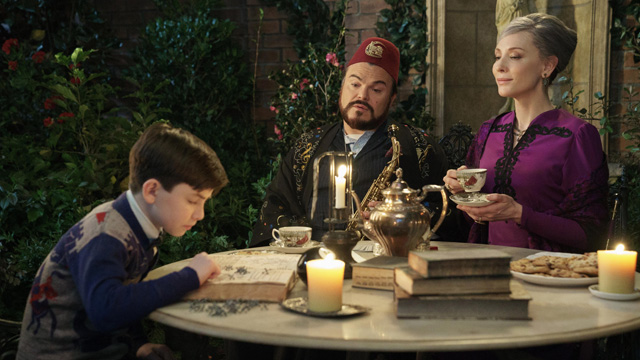
CS: I encountered Bellairs by accident. I was staying at someone’s house a few years ago and there was one of Bellairs’ books on the shelf. I noticed it because it had an Edward Gorey cover. I started reading it and was just like, “Oh, where has this author been all my life?”
Kripke: What book was it?
CS: I think it was “The Blue Figurine.”
Kripke: Yeah, “Curse of the Blue Figurine’s” great. That’s probably the next best book after “House”. It’s really good.
CS: What’s interesting about him is when you dig a little deeper you find out even though he’s not as well-known today, he had a huge influence on people like Neil Gaiman and Patton Oswalt. There is this Harry Potter-esque template that Bellairs had, where each series is about an orphan who has an eccentric guardian and gets mixed up in the occult. Can you just talk a little bit about Bellairs as an author, all of his work as a whole, and how looking at his bibliography holistically helped you sort of hone in on “House”?
Kripke: Yeah, sure. Bellairs did a lot of things that really blew my mind, both as a 10 year old and then pouring over the books again as an adult. I think the first and most important one is he takes his scares seriously. He doesn’t pull his punches for kids. They’re all family friendly and age appropriate, but they’re legitimately scary. He’s really a master of tone in terms of feeling like you’re in a real world that has real stakes where there’s real evil and real death. And yet, in all of the books, the way to combat some of the darkest, most dreadful, most serious evil is with the people you love and a good chocolate chip cookie. I really loved his humanistic attack on evil, that the way to defeat darkness in the world is with your family, whether you define that family through blood or just the people who really love you and have your back and the people who comfort each other. You don’t need to be brave. You just need to be honest with yourself and loyal to the people who love you. The quiet, humble humility of these characters. I haven’t really talked about this much in other interviews, but they’re very Midwestern, which is where I’m from. I’m from Ohio and John is from Michigan, just maybe about 90 minutes north of me. And one of the reasons I really was taken with these books is they’re Midwestern. The characters are humble and they’re grounded and they’re up against the most otherworldly fantastic things, but they’re dealing with it in such a down to earth, no nonsense Midwestern way. They’ve got heavy flannel jackets and they’re puttering around in their shitty cars and they’re just living their lives.
CS: Yeah, they’re not trying to take over the world or anything.
Kripke: Yeah, yeah, and they’re not trying to graduate into being the world’s greatest, most amazing wizard. They’re just trying to live their lives and maybe stop the overwhelming forces of evil once in a while, you know? All of his books have that, and I always really appreciated that grounded sensibility. I thought that was so interesting. It combined that kind of humility and down to earth quality with the fantastic and the occult. The other thing is -whether he did it consciously or not, I have to assume it was conscious- that every occult reference he makes in the books are real, in that they exist out in the real world in folklore somewhere. Every occult book title, every charm, every amulet, everything he mentions is a real thing. I didn’t realize that until later, when I was older, but that blew my mind, that he was creating a world that has so much credibility. I’ve said a bunch of times that in so many ways, this book is the origin story of “Supernatural,” and these are all rules and themes that I took into that show. That show is about Midwestern guys who are battling evil through a humble focus on family. I had a rule that every occult or supernatural object had to really exist out there in folklore. You could draw a direct line from “House with a Clock in its Walls” to “Supernatural.”
CS: Having spoken to Eli a little bit, said he was not familiar with the books, but that he did actually own a piece of Gorey art from the books. When Eli arrived onto the project, how did you and the other producers initiate him into this world?
Kripke: We were thrilled to have Eli be interested in this. In all the various meetings we had with directors, my feeling was always, “Yeah, but it’s a scary movie, right? You’re going to make a scary movie?” None of them created enough confidence that they would. When I found Eli was interested, I was like, “Oh, thank god. Like, he gets it. It’s going to be a scary movie.” What Eli brought to the table so beautifully, beyond just instinctual mastery of how to mount a scare properly, is he really nailed the heart of it. It’s got so much feeling and emotion. The tone is Edward Gorey and the books, and we just talked about it. When I was writing it and he was directing it we looked at as many Edward Gorey illustrations as we could get our hands on because Edward Gorey’s tone is so intrinsically connected to the tones of this story. In a weird way, he’s almost a co-author because his illustrations became such a part of it.
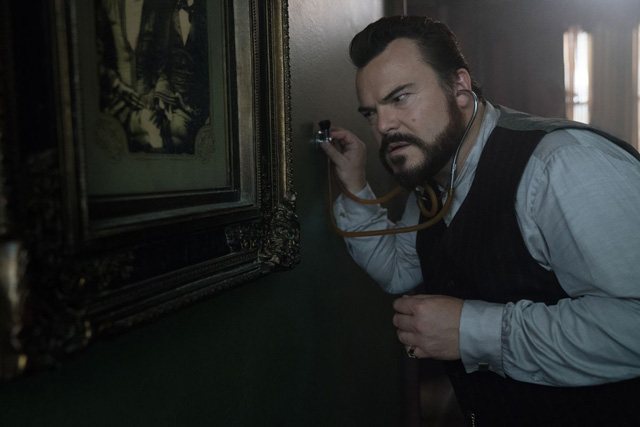
CS: Because it’s an Amblin movie, a lot of people are comparing it to those 80’s Amblin movies. But to me, it felt more akin to Tim Burton or Barry Sonnenfeld, that kind of gothic, kitschy, fun vibe.
Kripke: Right, sure. No, for sure. And that comes from Gorey. I thought Eli captured all of that, but it’s that heart that I think makes these books so compelling and timeless. They really have an incredible amount of heart and warmth at the core of them. I think if they didn’t, they wouldn’t nearly have the impact or be as lasting as they are. For Eli to really nail all that stuff, the same kind of emotion that is in some of the classic Amblin stuff, I think that’s probably the core difference between that and… I’m passionate about Tim Burton’s stuff, but Tim Burton’s stuff sometimes doesn’t have the family warmth and heart that I thought Eli did such a wonderful job bringing to this movie.
CS: I spoke to Eli a little bit about this, too, but there’s a lot of queer theory out there about Bellairs and about the books that he wrote. Did you ever think about that or take it into consideration, particularly for a character like Uncle Jonathan, who seems to be at least vaguely queer? What were your thoughts on that?
Kripke: The short answer is no, not specifically. The broader answer is in terms of Lewis’ story, so much of it is about -and this came from the book- so much of it is about embracing who you are, whoever you may be, even if it’s outside of the mainstream of the world you’re around. The terminology in the book is to embrace your weirdness. But that’s the same as saying embrace your uniqueness. Not only is it okay to be unique, it’s preferable. So I think the broader themes of the book could apply to sexual orientation, could apply to a lot of things that says be proud about being different and embrace it. And that’s truly actually where your strength really comes from. So I definitely see how you could get queer theory from that. I mean, it makes sense to me. I don’t think we wrote it like that consciously. We wrote it more like whether you’re gay, whether you’re a geek, whether you’re the kid in school who was bad at sports, whether you were shy, all of those things are better than being some thoughtless mainstream drone. I think it hopefully has a message that a lot of people can embrace.
The House with a Clock in Its Walls
-
The House with a Clock in Its Walls
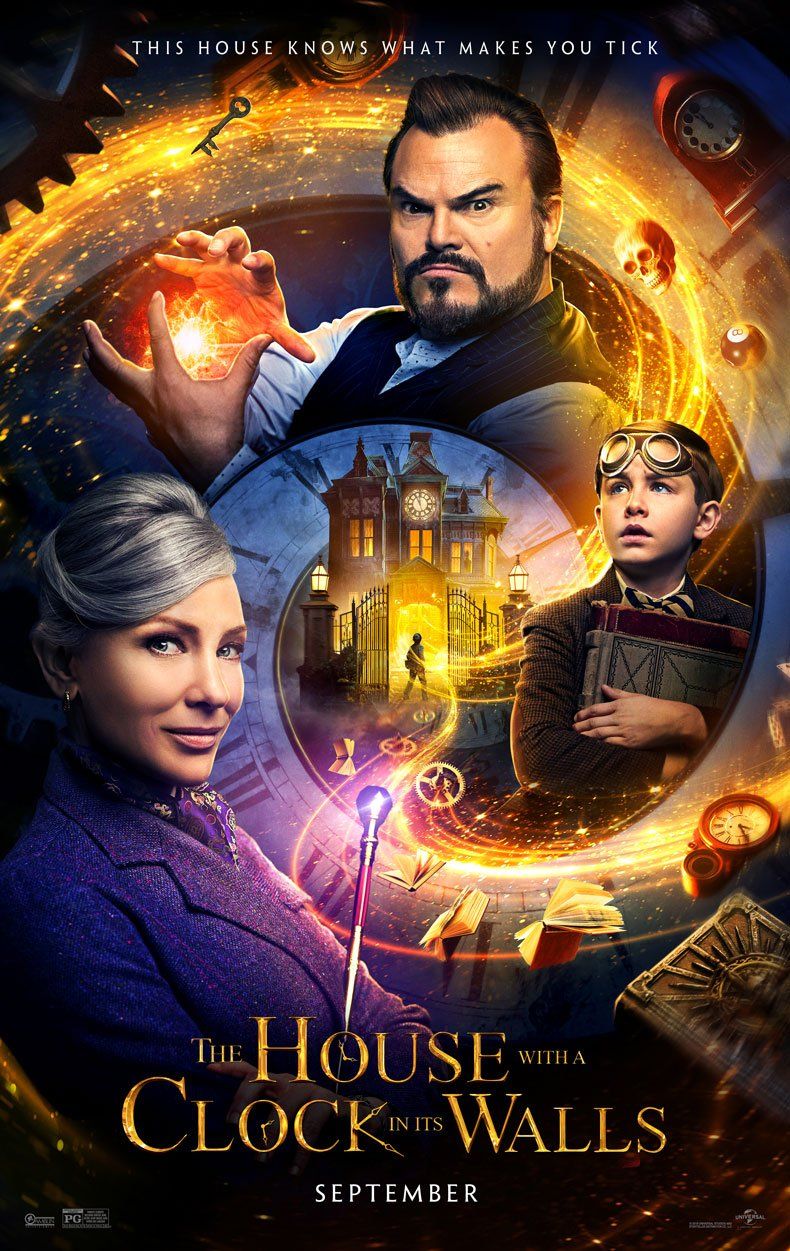
-
The House with a Clock in Its Walls

-
The House with a Clock in Its Walls

-
The House with a Clock in Its Walls

-
The House with a Clock in Its Walls

-
The House with a Clock in Its Walls

-
The House with a Clock in Its Walls

